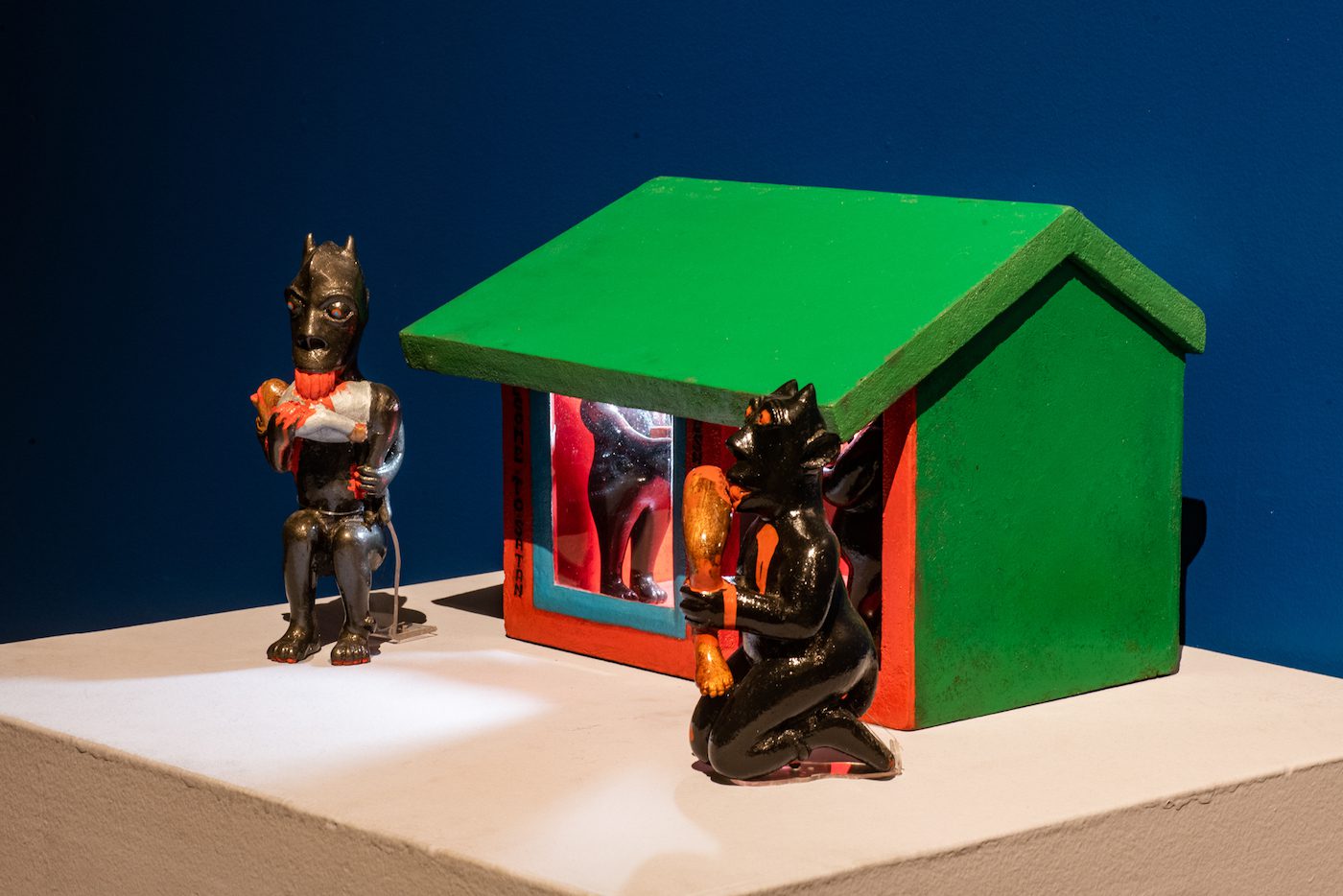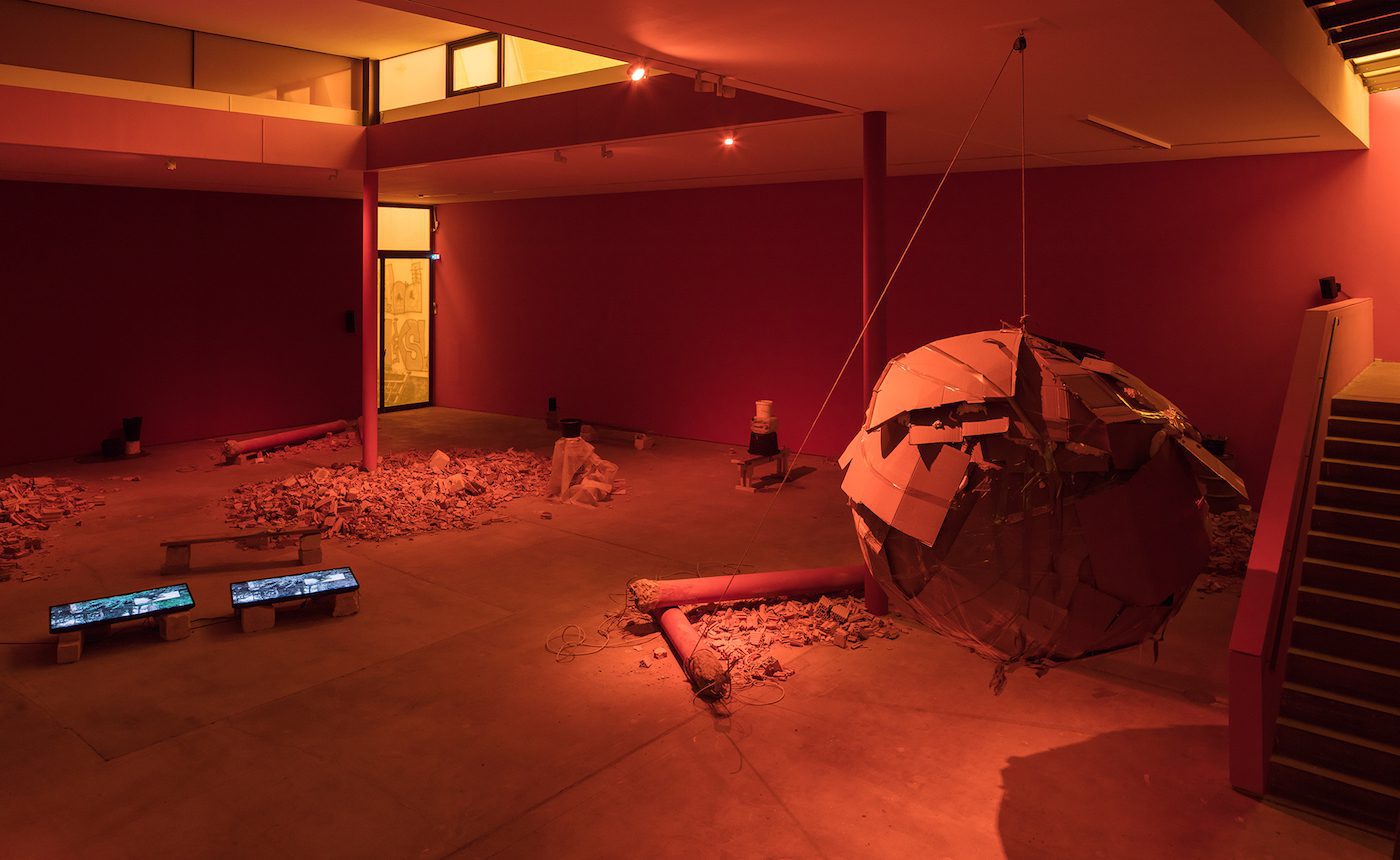C& author Sean O’Toole looks beyond the art openings of the world’s metropoles to highlight some of the best artworks and exhibitions of 2018.

Johannes Segogela, Satan's Fresh Meat Market, 1993, Santo Domingo, photo by Jalil Olmedo.
I know what your criticism is, but what’s your proposal? I think it was Tijuana-based artist and activist Raúl Cárdenas Osuna who once said this, or some version thereof. Whatever the exact wording, his idea – which thinks past the passivity of trolling to concrete action – has proven remarkably portable. It travelled with me to:
Marrakech: where a longstanding biennale failed to materialize and Touria El Glaoui’s 1-54 Contemporary African Art Fair stepped into the breach. There is possibly a “lesson” in this – about the slow end of the biennale project in Africa, maybe – but better to highlight Omar Berrada’s smartly curated talks program at the fair, which he presented under the rubric “Always Decolonise!” (Yes, that word. I think lexicographers at Oxford should have made “decolonize” their word of the year, not “toxic”.) One highlight was the fascinating performance-lecture by Dawit L. Petros and Heba Y. Amin, aka the Black Athena Collective, a sort of speculative rethinking of the history of the Red Sea.
Also in Marrakech, the Museum of African Contemporary Art Al Maaden. Um, it’s on a golf course. But hey, it braved a proposal: African photography. Highlights from French curators Jeanne Mercier and Baptiste de Ville d’Avray’s Africa Is No Island included Nicola Lo Calzo’s ambitious multi-country project Cham (2007–16), about the embodied legacy of the African slave trade, and Tangier-born Hicham Gardaf’s The Red Square series (2014–17), an austere look at Morocco’s rapid urban development in the style of Angolan photographer Edson Chagas.

Dineo Seshee Bopape’s installation UNTITLED (OF OCCULT INSTABILITY) [FEELINGS] (2016–18) at 10th Berlin Biennale. Courtesy the artist.
Dakar: where RAW Material Company (curator Koyo Kouoh and an energetic team) hosted the third iteration of this art lab’s biannual symposium series known as Condition Report. Held in Dakar’s new Museum of Black Civilizations, this year’s installment focused on art history. It is a discipline in crisis, at least in parts of the continent. “How paradoxical is it to be in the country of [Léopold Sédar] Senghor and not have a real art school (excuse me) or art history department?” remarked Kouoh. But there were propositions too, such as Salah Hassan’s: “There is a legacy of colonial anthropology that remains useful. How do you decolonize it?”

Mitchell Gilbert Messina, A Brief History of The Institute, mixed-media installation and film, 2018 Photo Sean O’Toole
Cape Town: where Thuli Gamedze put on her curatorial gloves for SMAC Gallery and pieced together an arresting show of young, mostly unknown artists under the title Shady Tactics. Her curatorial statement offered a bromide of current complaints, invoking ideas of “edges and margins” in relation to “centers and status quos.” Some of the works were plainly illustrative of this off-the-shelf critique of South Africa now – like Mitchell Gilbert Messina’s post-internet film of collaged images, A Brief History of The Institute (2018), which is – and isn’t – about Cape Town’s Zeitz Museum of Contemporary Art Africa (Zeitz MOCAA). But a good work is unruly, disobedient, interested in itself more than a curator’s idea of it. Along with Messina’s brilliant work, I really liked Sitaara Stodel’s photo collages about her personal history of impermanence and Callan Grecia’s purposefully bad paintings.
Oaxaca, Mexico: where Francisco Berzunza, a former diplomat transitioning into curating, pulled off Mexico’s first-ever focus on art from Southern Africa. Assisted by expatriate Senegalese curator Ery Camara – who was sent to Mexico in 1975 by Senghor to study conservation and museology for his work-in-progress Museum of Black Civilizations – Berzunza’s decision to focus on the theme of death for his project, Crossing Night, was propitious. It enabled him to establish lines of affinity between internationally overlooked South African sculptors like Jackson Hlungwani, Nelson Mukhuba, and Johannes Segogela, and better-known artists like Jo Ractliffe and Tracey Rose. The project was dogged by accusations of thoughtlessness with regards to the racial and gender configuration, but nonetheless yielded an exceptional solo show in the form of Ractliffe’s open-form reconsideration of her subtle, aftermath-interested practice, at the Centro Fotográfico Álvarez Bravo.
Johannesburg (sort of): where I met Zimbabwean painter Misheck Masamvu during his informal residency in a studio owned by Bopape and Ngcobo. “There was a generation of painters who were way ahead of what we are doing today,” he told me. “They were informed by pure intuition, not ignorance.” Some of these forgotten heroes were honored on Five Bhobh – Painting at the End of an Era at Zeitz MOCAA. Curated by Tandazani Dhlakama, this confident, eye-opening survey of current and historical painting was the first big show following the very necessary departure of founding director Mark Coetzee. It included Masamvu, but none of his personal avatars – George Churu, Ishmael Wilfred, and Luis Meque. There were however thrilling pieces by oldies Rashid Jogee and Thakor Patel, alongside standout works by younger artists Kudzanai-Violet Hwami, Troy Makaza, Wallen Mapondera, and Helen Teede.

Thakor Patel, Rhythmical Progression I (detail), 1999, mixed media on wood, 82 x 58cm, on loan from the National Gallery of Zimbabwe
Cape Town: where Heeten Bhagat, a former director the National Gallery of Zimbabwe (NGZ), told me: “Misheck started something, which other painters have used to fly off … He is nimble and dynamic and playful in a way that is really refreshing and beautiful.” Bhagat is, however, dismayed by the undiscriminating market clamor for vivid expressionist painting from Zimbabwe. He thinks a lot of new Zimbabwean painting is diminished by pastiche (Bhagat prefers the word “derivativeness”), which he attributes to “market forces”. Raphael Chikukwa, NGZ’s current director, tends to agree. He described the mannerism characterizing some of the work currently being feted as a “sad chapter” in an unfolding story: “Artists are failing to be themselves.”
A caveat: I loved far more things than is possible to write about. Like: El Anatsui’s first-ever solo exhibition in South Africa, Meyina, at the Iziko South African National Gallery in Cape Town, which was organized by Bisi Silva and featured Oases (2014–16), an almost uniformly gray drapery made from discarded aluminum printing plates. Like: Kathrin Sonntag’s deconstructed photo exhibition Things Doing Their Thing at the KINDL – Centre for Contemporary Art, Berlin. Like: Polly Apfelbaum’s shoes-off display of carpets, Happiness Runs, at Belvedere 21, Vienna. Like: Maja Maljević’s geometric prints, paintings, and ceramic sculptures, Polytekton, at David Krut Projects, Johannesburg.
Like: … no, let me stop here.
Sean O’Toole is a writer and editor living in Cape Town, South Africa.
More Editorial